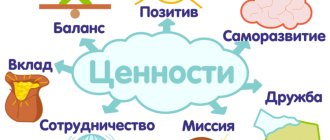In modern psychiatry today there are many types of mental disorders. These include various syndromes, affective disorders that are associated with mood swings, mental illness, sleep and eating disorders, sexual problems, various addictions, as well as mental retardation.
The forms of disorders are also different: from a mild course of the disease to a severe phase that poses a threat to human life.
It is interesting that many people living with mental disorders sometimes do not even suspect their existence, either because they consider their condition to be the norm, or simply cannot objectively assess themselves.
There are also frequent cases when an individual realizes the instability of his psyche, but deliberately does not turn to specialists for some personal reasons - fear of condemnation from society, banal embarrassment, inability to find a worthy qualified specialist.
In addition to the diagnosis of a psychiatrist, tests for mental disorders can reveal the presence of a mental disorder. At the moment there are already a huge number of them. However, only a few of them - time-tested and experience-tested - managed to gain a stronger foothold in psychiatric methodology and become widespread in society.
Personality test
Notice that you may see one thing, but the person next to you sees something completely different.
Let's learn something about your psychological skills.
So look at this image. What do you see first?
-If you see a chicken, it means that you can easily focus on small details. You have a very strong sense of observation and enjoy a variety of technical things.
-If you see the silhouette of a woman with red lips, on the contrary, it is difficult for you to concentrate on one thing for a long time. You are a creative, enthusiastic person who wants to try everything.
-And finally, the rarest case: if you see a man’s face, it means you are a genius.
The outlines of his face can only be seen by mentally turning the image over. Only a few are able to see the outline of a stranger in this drawing.
Rorschach blot test
The so-called Rorschach test is one of the most popular tests for determining the human psyche.
The Rorschach inkblot technique was invented in 1921 by Swiss psychiatrist Hermann Rorschach.
The essence of the test is to determine the associations that arise in the subject when viewing 10 ink blots.
Each of these ten outlines evokes different associations with a particular image, word or phrase.
The test is based on the fact that a person’s associations determine the characteristics of his personality.
Take a Rorschach test
1. Picture one
The answers allow the psychologist to determine how a person copes with stressful situations and emerging problems.
The most common answers when viewing the first picture are a bat, a butterfly, a moth, an angel.
-For some, a bat is a symbol of evil spirits and something unpleasant. For others, it is overcoming a difficult path and rebirth.
-Butterflies indicate a transitional period in life, hinting at transformation and the desire to change, grow and cope with emerging difficulties.
— A person who sees a moth in an ink stain is most likely dissatisfied with his appearance; he also believes that his talents are not appreciated by others.
He is prone to bouts of irritability and weakness.
But the outline of an animal’s muzzle can signal a serious problem within a person, an unwillingness to resolve these difficulties, and the fears that haunt him.
This could also be a sign of paranoia.
2. Picture two
The second picture is presented in the form of a black and red inkblot.
As a rule, people see something sexual in this blot.
How a person reacts to this spot describes their ability to control their feelings, including anger, resentment, and physical pain.
Most respondents associate red spots with blood.
As a rule, people look at the following objects in an inkblot: two figures, a person in the process of prayer, their own reflection in a mirror, or some kind of animal.
- If a person sees two figures in the spot, this means that, most likely, he is very addicted to sex or is obsessed with his partner.
- If someone saw a person reflected in a mirror in an inkblot, this means that the subject is not devoid of narcissism. He is also characterized by egocentrism and selfishness. For him, his own “I” is above all.
-Seeing a dog means that the person is a wonderful and loyal friend, ready to do a lot for the sake of friendship, even to the detriment of himself.
- If the subject saw an elephant, this means that the person is endowed with a good memory, a sharp mind and an excellent sense of humor.
-If you see something negative and repulsive in the spot, this indicates the need to face your own fears.
-The bear is associated with aggression, competition and the desire for independence.
What is a mental disorder?
The definition of “mental disorder” covers a wide range of deviations from the normal state of mind of people. The internal health disorders in question should not be taken as a negative manifestation of the negative side of a person’s personality. Like any physical disease, a mental disorder is a violation of the mechanisms and processes of perception of reality , which creates certain difficulties. People who are faced with these problems are poorly able to adapt to real life conditions and do not always interpret reality correctly.
Rorschach test, pictures
3. Picture three
The third picture helps to identify the attitude of the test taker towards the people around him. Thanks to the black and red spots, you can determine how well he is adapted to social interaction.
The most common answers are two human figures, a person seeing his reflection in a mirror, a butterfly or a moth.
-Two people symbolize a fairly active social life, that society plays a huge role in his life. This means that the person has a very high level of social interaction.
-If a person sees two figures in the picture that are involved in the game, this means that he is competing with someone in real life.
-But if the patient suddenly saw people washing their hands in the ink stain, this indicates his insecurity, as well as possible paranoid tendencies.
-Looking in the mirror means that a person sees only himself and is deprived of the ability to understand others. As a rule, he tends to neglect the opinions of others, focusing solely on his own Ego.
It is generally accepted that people of traditional orientation, as a rule, see two men in the picture.
But the rest, on the contrary, look at either two women or a person of indeterminate gender in the ink stain.
However, it is impossible to say with complete confidence that this picture can be used to determine a person’s sexual orientation. Psychologists have differing opinions on this matter.
Laboratory methods
Increasing diagnostic efficiency is directly related to the development of new methods and principles for diagnosing mental disorders, which are based on objective biological criteria. Currently, an active search is underway for biological signs (markers) of schizophrenia and schizophrenia spectrum disorders: genetic, immunological, and neurophysiological indicators are being studied. The discovery of features that are inherent in a particular disease is the basis for the creation of additional diagnostic tests for schizophrenia. Despite worldwide efforts, very few such features have been discovered. Below we will look at the most significant of them.
An undeniable contribution to the formation of a predisposition to schizophrenia and other mental illnesses is made by genetic factors. Indeed, patients' families often have relatives who suffer from mental disorders. The closer the degree of consanguinity, the higher the risk of getting sick. The risk is highest if both parents or the patient's twin are sick.
Attempts to find genes that are markers of schizophrenia have led to ambiguous conclusions. It turned out that patients with schizophrenia have hundreds of gene abnormalities in various combinations. The identification of such deviations is not evidence of schizophrenia, but only indicates the likelihood of its occurrence. The development of the disease occurs through the interaction of many factors (internal and external), including genetic ones.
Another direction in the search for markers of schizophrenia and schizophrenia-like disorders is immunological methods. By the end of the twentieth century, the close connection between the nervous and immune systems became apparent, and special molecules and substances were discovered that participate in this interaction.
It turned out that some immune factors that circulate in the blood can respond to mental changes and reflect disease processes that occur in the brain. Among these factors:
- antibodies to brain proteins
- leukocyte elastase
- alpha-1 proteinase inhibitor
- C-reactive protein
The number of antibodies to brain proteins increases noticeably in some forms of schizophrenia, autism, and developmental delays. Measuring the level of such antibodies in the blood is widely used as a method to complement clinical methods of psychiatric diagnosis. In isolation from clinical data, this method is not valid, since an increase in the level of antibodies is also observed in other diseases of the nervous system: multiple sclerosis, encephalitis, injuries, tumors.
A more sensitive way to diagnose mental disorders is to determine in the blood indicators of innate immunity, namely pro-inflammatory factors: leukocyte elastase, alpha-1-proteinase inhibitor, C-reactive protein. Scientific studies have found a connection between these indicators and the exacerbation of schizophrenia, the nature of the course and its form, as well as the degree of mental defect.
By combining measurements of pro-inflammatory markers with the level of antibodies to brain proteins in the blood (protein S-100, myelin basic protein), a new tool for objectifying the diagnosis was created - Neurotest, which increases the reliability of detection and prognosis of schizophrenia and schizophrenia-like disorders.
Rorschach ink test
4. Picture four
In the fourth drawing, the patient is presented with an image shaded in black ink.
Associations with this picture are related to a person’s upbringing and his perception of authority.
As a rule, people see a large male figure, a monster or an animal, its skin.
-A large animal or monster is a symbol of strong fear of authority, representatives of power or people who exceed you in physical or moral strength.
-The animal’s skin indicates that the patient experiences a feeling of discomfort when it comes to authoritarian people.
In this blot, the majority of respondents, as a rule, see something scary, unpleasant and masculine.
Psychologists also pay attention to how a person describes this picture and what adjectives he uses.
This helps specialists understand what a person’s attitude is towards authoritative people, in particular males.
5. Picture five
The fifth card is a black ink blot. Associations with this picture are similar to those caused by viewing the first card.
What a person sees in the picture describes his inner world and attitude towards emerging problems. As a rule, the patient is able to discern a bat, butterfly or moth in this blot.
Unlike previous cards, people do not see something scary and threatening here.
If a person’s associations with this drawing differ from the associations that arise when viewing the first inkblot, this may indicate a lack of tension and discomfort.
If the patient sees moving figures in the blot, this may be a sign of paranoia or schizophrenia.
6. Picture six
The associations with the blot in this picture are related to the perception of a sexual nature.
The most common answers are: a hole, an animal's skin, a ship, or human facial features.
-The animal symbolizes the love of touch. Most often, the animal is seen by connoisseurs of tactile contact.
-If a person saw a ship or facial features, this means that the person being tested is inclined to superiority over his partner. As a rule, he dominates in relationships.
-The carpet symbolizes a certain level of dependence on the opinions of others, as well as the fear of being left alone. He is strongly attached to his partner and is afraid to let him out of sight even for a short time.
— The skin of an animal indicates that, most likely, a person is afraid to enter into close relationships and does not strive to communicate with other people. As a rule, such a person is characterized by a feeling of emptiness and loneliness.
-If a person sees a person’s genitals in a spot, this means increased sexuality.
How testing is carried out
In many ways, balance testing depends on what kind of deviation is being diagnosed. In order for the patient to take the correct position, he needs to stand straight, with his legs pressed tightly against each other.
Next, the patient should stretch his arms in front of him and close his eyes. But test variants are possible when the eyes are closed, but the arms remain in a lowered position along the body. In this situation, the doctor must support the patient, preventing falls and injuries.
If we talk about the sphere of neurological abnormalities, then with this position any staggering is taken into account and the main task of checking the Romberg symptom is to determine the degree of stability. Time intervals are also taken into account, which are also important for correct diagnosis.
A more difficult version of the test involves placing your legs so that they are on the same line. This happens as follows: the patient places his feet so that the heel (for example, the right foot) is in contact with the toes (of the left foot) and they are on the same line.
In this position, the patient should extend his arms in front of him and close his eyes. An option is possible in which the head is thrown back.
Diagnosis of Parry Romberg syndrome in practice:










